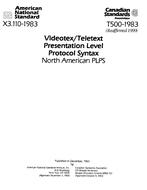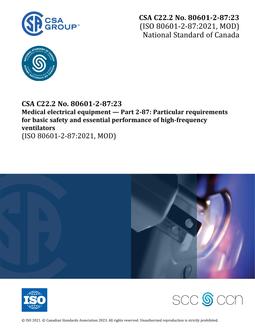
CSA T500-1983 (R1999)
Click here to purchase
1. Scope
1.1
This standard describes the formats, rules, and procedures for the encoding of alphanumeric text and pictorial information for videotex and teletext? applications. (?The term “”teletext”” (not yet adopted by CCIR) is commonly used to refer to a broadcast television videotex service. It is different from “”teletex””, a term officially adopted by CCITT to define a specific type of terminal-to-terminal text communications service.) This standard is based on the architecture defined in ISO’s multilayered reference model of open systems interconnection. This standard? defines a specific data syntax for use by OSI presentation layer protocols and some specific semantics for use at the application layer in videotex and teletext applications. (?This standard does not define the OSI Standard presentation layer protocol itself.)
1.2
The basic coding scheme is built upon the framework established by Recommendation S.100-1980 (International Information Exchange for Interactive Videotex) of the International Telegraph and Telephone Consultative Committee (CCITT). Operation in both a 7-bit and an 8-bit environment is accommodated. Alphanumeric text, a set of supplementary characters, and a dynamically redefinable character set (DRCS) are provided. Both mosaics and geometric primitives, as well as DRCS, can be used to create pictorial displays. The mosaic coding is compatible with CCITT Recommendation S.100-1980. The geometric primitives are compatible enhancements to the picture description instructions (PDI’s) defined in the alphageometric option of CCITT Recommendation S.100-1980. Additional capabilities include color mapping, a controllable stroke width, macros, continuous character scaling, programmable texture masks, unprotected fields, partial screen scrolling, and incremental encoding for highly compact descriptions of certain classes of images.
Note: The user’s attention is called to the possibility that conformance with this standard may require use of an invention covered by patent rights. By publication of this standard, no position is taken with respect to the validity of this claim or of any patent rights in connection therewith. A patent applicant has, however, filed a statement of willingness to grant a license under these rights on reasonable and nondiscriminatory terms and conditions to applicants desiring to obtain such a license. De tails may be obtained from the publishers.
Product Details
- Number of Pages:
- 158
- File Size:
- 1 file , 12 MB


